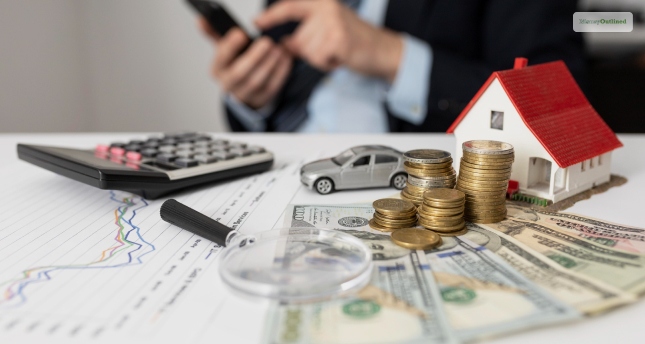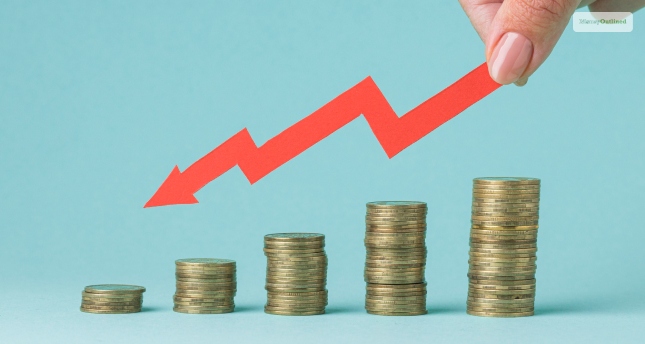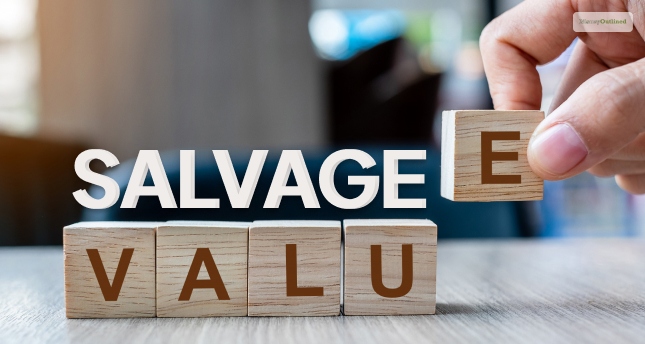Table Of Contents
How To Calculate Salvage Value? Definition & Formula
If you run a business as an entrepreneur, you must know that all your assets start depreciating over time. After your assets like machinery have run their course and are no longer useful, it’s best to sell them. However, since its value has depreciated over time, it will no longer be the same price that you bought it for. This new depreciated price is referred to as salvage value.
To learn more about this value and its importance for businesses, read this post till the end. Here, you will learn the formula for calculating this value and the various depreciation methods that affect it.
Salvage Value Meaning

As the name suggests, the salvage value of assets refers to their final value after they have depreciated over time. Also known as scrap value or residual value, it’s important for businesses to calculate the value to find the selling price of old assets.
If you run a business, you will need various machinery like computers, production equipment, workspaces, and more. These objects that you need to run your business will be collectively regarded as your business assets.
When you buy these assets, you buy them at its base price. However, the more you use these assets and the more wear and tear they suffer, they slowly become less effective. When it?s no longer effective, there?s no point in keeping these assets around.
Therefore, businesses have this practice of selling their assets after they have run their effective useful life span. This life span is the estimated time till which assets will be useful, measured in years.
However, since the value of an asset decreases or depreciates over time, you cannot expect its salvage price to be the same as its initial cost. It will always be lower than it, typically less than half its original price.
How To Find Salvage Value?

There are two methods of calculating this value. The two methods are:
- Method of Estimation
- Method of Depreciation
1. Method Of Estimation
You can find the scrap value of your machinery and other assets by calculating their anticipated salvage value percentage.
This anticipated scrap value percentage refers to the efficacy of the machinery at the end of its useful life. To calculate this, you need to take the help of a professional appraiser.
Appraisers are professionals who have in-depth knowledge of assets. They will also be able to calculate how long the machine is expected to be useful to a company based on how much the organization is going to use it.
Depending on the expected wear and tear a machinery will go through over the years, the appraiser will help you know what the anticipated scrap value percentage of an asset is. This percentage refers to the final usefulness percentage of an asset.
However, remember that this value is simply an estimate. It is not the official salvage percentage. This estimate is taken into consideration for the future since no one can really tell the state of assets after their useful life has passed. Every organization uses the same machinery in different ways and in different frequencies.
Therefore, the net salvage value formula that you will be used to calculate the residual value of machinery is:
| Salvage Cost = Original Cost x Anticipated Salvage Value percentage |
Here is an example that explains how to calculate salvage value based on the formula above.
| Let?s take into account the cost of your vehicle minus any additional costs like temporary car insurance. Let the initial cost of the vehicle be $4000, and it has a useful life of 5 years. However, after appointing an appraiser, its estimated salvage percentage was estimated to be 30% after 5 years. Therefore, its salvage value would be 30% of $4000 = $1200. |
Therefore, this method of calculating this value is referred to as the estimated method. Businesses calculate this value beforehand at the time of buying this machinery.
2. Method Of Depreciation
There exists another method – the most recognized method. Using this method, you can calculate salvage value at the time of selling the asset. This method is preferred more because it paints a more accurate description of the final salvage costs of the asset, which is not an estimate but the actual value.
The formula for calculating salvage value here is
Salvage Value = Original Cost x (1 – Depreciation Rate)Number of Years Used
Here, you need to use various depreciation rating methods to obtain this value. Here?s an example of this formula in action, taking into consideration the previous example:
| Let?s suppose you buy a vehicle worth $4,000. You have used it for 5 years, where it has depreciated by 15% every year. Therefore, after 5 years, its scrap value will be $4000 x (1 – 15%)5 = $1775 (approximately) |
How To Calculate Depreciation Rate?

If you wish to use the method of depreciation to calculate salvage value, then you should calculate its depreciation rate using these methods:
- Straight Line Depreciation: This is the most commonly used depreciation rate calculator. Here, it?s taken into consideration that your assets depreciate by a fixed amount every year.
- Declining Balance Depreciation: In this depreciation method, the amount of depreciation lowers every year. Therefore, it takes into consideration that an asset depreciates the most in its first year. This method requires an estimated salvage price to be calculated.
- Double Declining Balance Depreciation: This method takes the depreciation as double its rate. This also requires an estimated salvage price to be calculated.
- Sum-Of-Years Digits Depreciation: In this method, the useful life of an asset is broken up into several denominators in ascending order. For example, if the useful life is 4 years, then it will be broken up as 4+3+2+1=10. Then, this denominator is divided by 10 (depending on the useful life of the asset) and multiplied by the initial asset value to calculate depreciation every year.
- Units Of Production Depreciation: In this depreciation method, the depreciation rate is based on the total number of products (in units) it will produce over its useful life.
Salvage Value Vs. Other Values
The approximate value of assets by the end of their useful life is known as the salvage value of that asset. It is a representation of the actual amount that a company or business could sell its assets for once they are fully depreciated. On the other hand, book value is defined as the value of the asset exactly how it appears on the balance sheet of the company. We calculate it by deducting the accumulated depreciation from the original cost of the assets. The balance sheet always reflects the book value. The salvage value has no relation whatsoever with the balance sheet of the company.
There are slight similarities between the salvage value and the residual value, and yet there are some differences, too. In certain contexts, residual value refers to the estimated value of the assets present in a company at the end of the loan or lease term, which helps to determine the final buyout or payment price. However, in other cases, the residual value of the assets by the end of their life costs less to discard the assets. In multiple cases, the salvage value may only reflect the value of those assets at the end of their life without considering the selling costs.
Finally, the salvage value shares the maximum comparison with the scrap value. There might be a minor nuisance as the scrap value may assume that the good isn’t being sold, but instead, it is just converted to raw materials. For instance, a business may decide that it wants to scrap a fleet of vehicles of the company for $1,000. Now, the thousand dollars may also be considered as the salvage value of the vehicle, though the scrap value is marginally descriptive of what the business decides to discard its assets.
Example Of Salvage Value
Let us now consider a situation where a business acquires a couple of vehicles. The business has to pay $250,000 for a total of eight commuter vans that it wishes to use to deliver the goods across the city. If the company makes an estimate that a whole lot of vehicles would turn useless once their useful life finishes, the salvage value would then be $0, and the business may have to depreciate the entire $250,000.
Now, if the company assumes that each of the vehicles will reach a salvage value of $5,000, then it would mean that of the total $250,000 that the company had paid, it expects a recovery of $40,000 by the end of the useful life of the assets. To depreciate these assets appropriately, the company may depreciate the net of the cost and the salvage value of the useful life of the assets.
Bottom Line
The salvage value of an asset like cars and computers refers to the final selling price of the asset after many years. It typically refers to the selling price of the asset after its useful life is over. You can calculate this by an estimation method or by using the depreciation method.
If you have any questions regarding a salvage value example, then comment your doubts below!
Explore More:











Leave A Comment